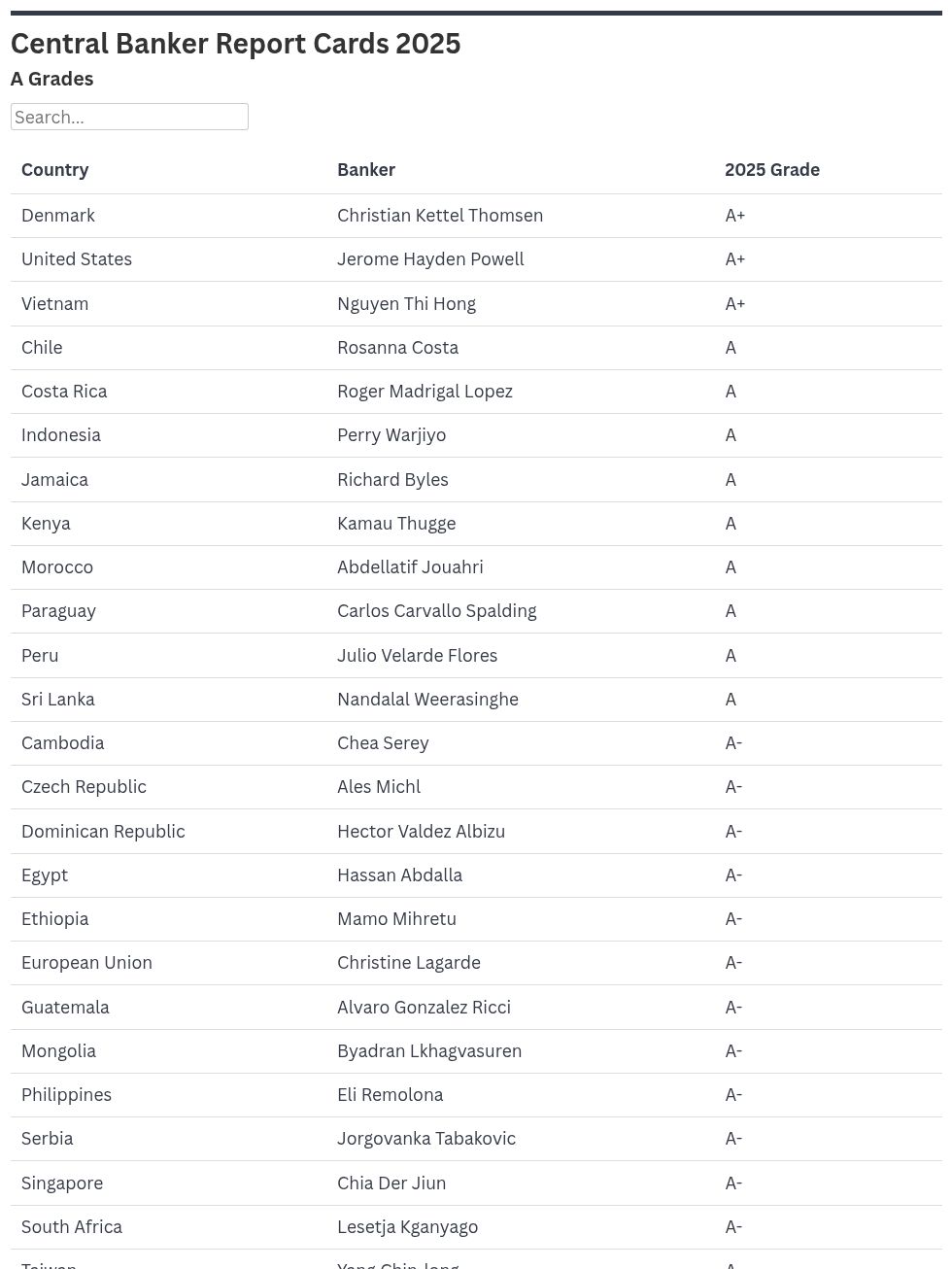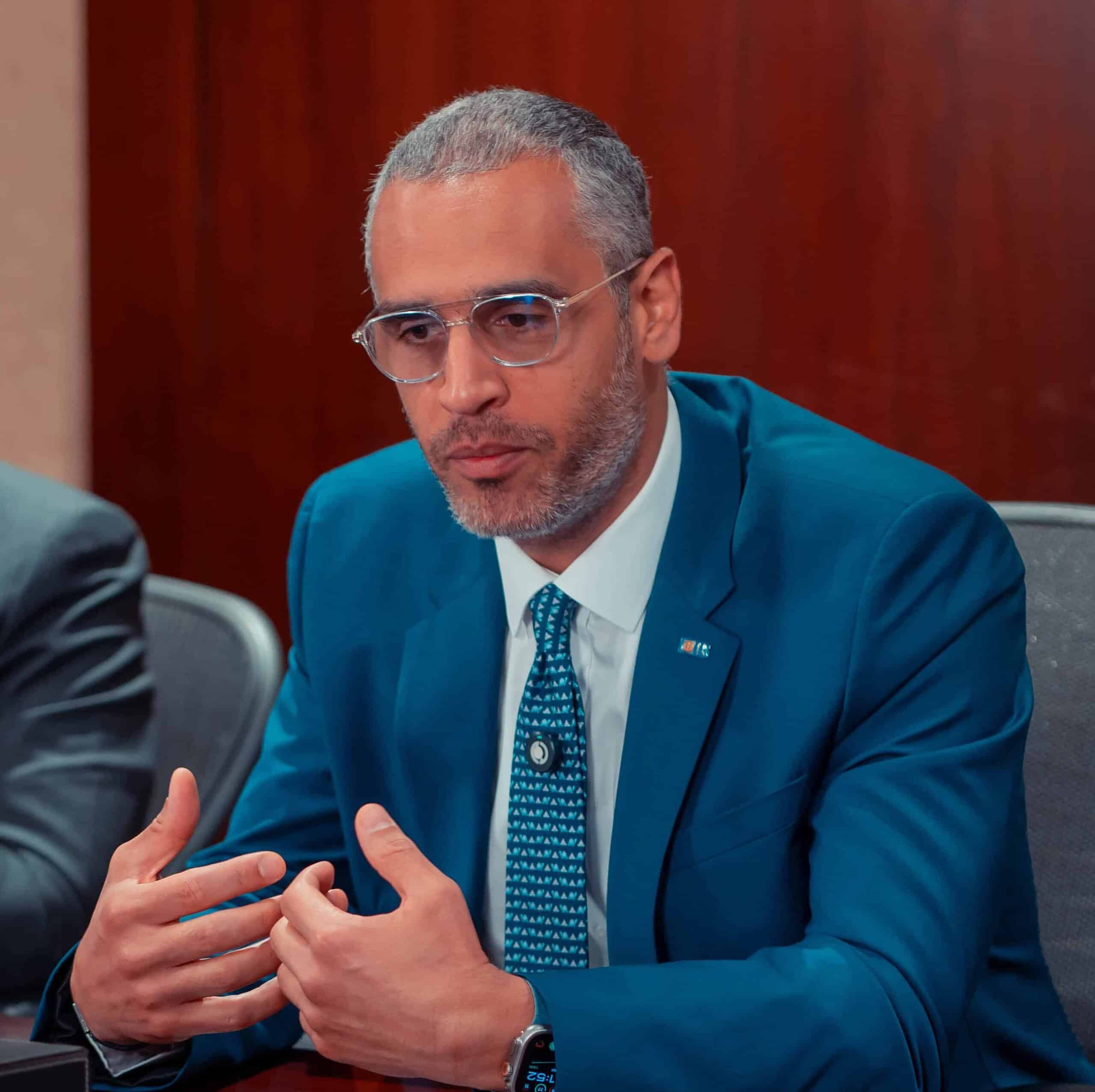
Image source: The Motley Fool.
DATE
Wednesday, October 15, 2025 at 5:00 p.m. ET
CALL PARTICIPANTS
Chief Executive Officer — Shelley Simpson
Chief Financial Officer — Brad Delco
Executive Vice President, Commercial — Spencer Frazier
Chief Operating Officer — Nick Hobbs
President, Highway Services — Brad Hicks
President, Intermodal — Darren Field
Need a quote from a Motley Fool analyst? Email [email protected]
TAKEAWAYS
Revenue — Roughly flat year over year, indicating limited top-line growth in a soft freight demand environment.
Operating income — Operating income improved 8% compared to the prior year period, reflecting successful cost discipline and margin repair efforts.
Diluted earnings per share — Diluted earnings per share increased 18% compared to the prior year period, despite inflationary headwinds in insurance, wages, and equipment costs.
Share repurchases — Over $780 million used to buy back 5.4 million shares year to date, maintaining balance sheet leverage around one times trailing twelve-month EBITDA.
Cost reduction initiative — More than $20 million of structural costs eliminated, with the majority of the $100 million target expected to be realized in 2026.
Intermodal volume — Decreased 1% year over year, with monthly trends of -3% in July, -2% in August, and flat in September.
Dedicated Contract Services (DCS) sales — Approximately 280 trucks sold, with ongoing visibility to fleet losses resulting in a truck count decline of about 85 units sequentially.
DCS margins — Maintained double-digit margins despite mature location losses and startup costs for new business.
ICS (Brokerage) rates — Reflecting improved new customer wins during the bid season.
Net Promoter Score (NPS) — Achieved a score of 53 in Intermodal.
Final Mile Services — Ongoing demand weakness for furniture, exercise equipment, and appliances, with challenged market conditions expected through year-end and anticipated legacy appliance business losses in 2026.
Safety performance — Achieved record-low DOT preventable accidents per million miles for the third consecutive year, improving further through the current period.
Regulatory impact — Recent U.S. regulations, such as English language proficiency and non-domiciled CDL, are reducing industry capacity but are not materially affecting the company’s own operations.
Technology & automation — Deployed 50 AI agents, automated 60% of third-party check calls, more than 73% of orders are auto-accepted, automated 80% of paper invoice payments, and saved about 100,000 hours annually across highway, dedicated, and CE teams.
Capital allocation priorities — Investment in the business is prioritized over buybacks and dividends, with an emphasis on maintaining investment-grade leverage.
SUMMARY
Management of J.B. Hunt Transport Services (JBHT -0.53%) reiterated strategic clarity on long-term operational excellence, pursuing aggressive cost reductions and process automation to strengthen margins in challenging market conditions. Executive commentary directly addressed the implications of rail industry consolidation, emphasizing the company’s experience in prior mergers and robust long-term agreements with key rail providers. Sequential volume trends in Intermodal highlighted ongoing softness offset by service-driven share gains. Technology deployment and automation initiatives were positioned as critical levers for future efficiency gains and margin sustainability. Near-term expectations for DCS and Final Mile Services included persistent end-market headwinds but pointed to a return to modest fleet growth and targeted business mix shifts in 2025 and 2026. The company explicitly reaffirmed its balanced capital allocation strategy focused on core investment.
Simpson stated, “we are making good progress towards reaching our $100 million savings goal and advancing towards our long-term margin target.”
Delco highlighted, “productivity and cost management efforts more than offset those headwinds to drive our improved results.”
Frazier noted, “truckload capacity continued to exit the market, and the pace of exits is accelerating,” though soft demand is limiting immediate pricing effects.
Spencer Frazier explained that intermodal volumes benefited from conversions “primarily because more customers are converting freight to intermodal from the highway as they see our commitment to operational excellence differentiating J.B. Hunt Transport Services, Inc.”
Brad Delco directly attributed recent improvements to “service efficiencies, balancing our networks, dynamically serving customers to meet their needs, focusing even more on discretionary spending, and driving greater asset utilization.”
Hicks indicated DCS expects “operating income to be approximately flat compared to 2024,” with potential for further growth in 2026 driven by new business startups.
Simpson emphasized strategic adaptability to rail consolidation: “our scale and influence allow us to coordinate complex intermodal moves and deliver unique solutions for our customers.”
INDUSTRY GLOSSARY
Drayage: The movement of freight over a short distance, typically as part of an intermodal shipment within a port or between rail terminals and customer locations.
DOT preventable accident rate: A safety performance measure calculated as the number of Department of Transportation (DOT)-recordable, preventable accidents per million miles driven.
Steel wheel interchange: The movement of an intermodal rail container car between two railroads without unloading the cargo, typically using physical rail routing connections.
Headhaul/Backhaul: ‘Headhaul’ refers to high-demand freight moves in a preferred direction, often at higher rates; ‘Backhaul’ refers to return moves that typically have lower rates or less freight volume.
IMC: Intermodal Marketing Company — a non-asset third-party intermediary arranging intermodal freight movement between shippers and railroads/trucking firms.
Full Conference Call Transcript
Shelley Simpson: Thank you, Andrew, and good afternoon. Throughout the year, our focus has been on three clear priorities: operational excellence, scaling into our investments, and continuing to repair our margins to drive stronger financial performance. We are executing these priorities with discipline and determination, guided by a strategy designed to strengthen our competitive position and unlock long-term value for our shareholders. I am highly confident that our approach is building a stronger company, one that is fully equipped to capitalize on meaningful growth opportunities ahead while driving stronger financial performance. Across our businesses, service levels remain excellent. We have systemically elevated our service standards to drive disciplined profitable growth with both new and existing customers.
Even as overall freight demand softened during the quarter, our unwavering commitment to service enabled our intermodal and highway businesses to capture additional volume and outperform the market. Operational excellence is now synonymous with J.B. Hunt Transport Services, Inc., and we are leveraging this reputation to drive strategic growth and maximize returns on our investments to match the unique value and strong service levels we provide for customers. We remain focused on controlling what we can, optimizing costs in the near term without sacrificing our future earnings power potential. In addition, we are placing a heightened emphasis on operational efficiency throughout the organization.
By streamlining processes, adopting best practices, and leveraging technology, we aim to utilize every resource as effectively as possible to maximize productivity and performance. Our initiative to lower our cost to serve, announced last quarter, is focused on removing structural costs from our business. The organization’s collaborative efforts continue to gain momentum, and Brad will share more details on our progress. This initiative marks our latest evolution in expense discipline, and we are making good progress towards reaching our $100 million savings goal and advancing towards our long-term margin target. Now, let me address the elephant in the room: rail consolidation. J.B.
Hunt Transport Services, Inc.’s position is rooted in our commitment to delivering exceptional intermodal service and creating long-term value for our customers and shareholders. We recognize both the opportunities and risks that consolidation presents. But our decades of experience, including navigating seven prior Class I railroad mergers, and our thoughtfully developed long-term agreements and strong relationships with NS, CSX, and BNSF should provide the basis for us to adapt to any changes in the industry. As the largest domestic intermodal provider, our scale and influence allow us to coordinate complex intermodal moves and deliver unique solutions for our customers. We are consistently rated best in class by third-party industry surveys of intermodal customers.
And our ability to deliver seamless, differentiated service across the entire North American intermodal network is a key competitive advantage. Our focus remains on providing reliable, efficient, and innovative service that benefits our customers now and into the future. As the rail industry evolves, we expect our proven adaptability and unwavering dedication to service will not only safeguard our leadership position but should also continuously set higher standards of excellence for our customers. I want to close by recognizing the entire organization for their hard work and progress across many areas of focus. The third quarter is extra special at J.B. Hunt Transport Services, Inc. as it includes National Truck Driver and National Technician Appreciation Week.
Our professional drivers and maintenance teams are the backbone of our success. And their record-breaking safety performance is a testament to their skill, dedication, and attention to safety every day. We appreciate all they do to keep our company, our customers, and our communities safe. With that, I’d like to turn the call over to our newly appointed CFO, Brad Delco.
Brad Delco: Thanks, Shelley, and good afternoon. I will hit on some highlights of the quarter, review our capital allocation plan, and give an update on the lowering our cost to serve initiative. Let me start with the quarter. As you have already seen from our release, revenue was roughly flat year over year while operating income improved 8% and diluted earnings per share improved 18% versus the prior year period. While inflation in insurance, wages, and employee benefits and equipment costs were all up, our productivity and cost management efforts more than offset those headwinds to drive our improved results.
Over the years, you have heard us talk about investing in our long-term growth, maintaining cost discipline without jeopardizing our future earnings power, and creating operating leverage when the market returns. Well, it’s no secret the market hasn’t returned yet, but the notable improvement in our financial performance this quarter should serve as a true testament to the talent and capabilities of the people throughout our organization and the execution of our strategy towards operational excellence in safety, service, and lowering our cost to serve. On capital allocation, our balance sheet remains healthy, maintaining leverage around our target of one times trailing twelve-month EBITDA while purchasing over $780 million or 5.4 million shares of our stock year to date.
This aligns with our messaging around prefunding our long-term future growth during the downturn and having the flexibility with the strong cash flow generation of the business to be opportunistic with share repurchases as a way to return value to our shareholders. We will be disciplined in our capital allocation approach with investing in the business as priority number one, sustaining our investment-grade balance sheet, supporting future dividend growth, and finally continuing our opportunistic repurchases. Last quarter, we outlined our lowering our cost serve initiative to remove $100 million of structural costs from the business. I’m happy to share we are off to a good start, having eliminated greater than $20 million in the quarter.
Examples of our success are in service efficiencies, balancing our networks, dynamically serving customers to meet their needs, focusing even more on discretionary spending, and driving greater asset utilization. We remain committed to updating you on our progress going forward. But our intent is to demonstrate our progress in our reported results rather than just speak to them. As we noted last quarter, we will realize a portion of these benefits this year, with the majority of the impact realized in 2026. Let me close with this and what I hope you take away from our quarter. First, our company continues to execute from a position of strength.
We have been transparent with our strategy, our investments to be best prepared to service our customers’ future capacity needs. Second, we also continue to remove structural costs from the business. We are off to a good start and have more work to do. Third, our business continues to generate a significant amount of cash, and we remain focused on generating strong returns with our deployed capital. We have been opportunistic with our share repurchases, all while maintaining modest leverage on our balance sheet. That concludes my remarks. Now I’d like to turn it over to Spencer.
Spencer Frazier: Thank you, Brad, and good afternoon. I’ll provide an update on our view of the market and some feedback we are hearing from our customers. Overall demand trended below normal seasonality for much of the quarter outside of the seasonal lift we saw at quarter-end. On the supply side, truckload capacity continued to exit the market, and the pace of exits is accelerating. But the soft demand environment is likely muting the market impact of capacity attrition. Outside of recent weeks, truckload spot rates remained under pressure in the quarter. More recent regulatory developments and, more importantly, regulatory enforcement is having an impact on capacity.
While this industry may have a chicken little reputation when it comes to predicting capacity changes, the capacity bubble may be deflating as we speak. In the near term, customers will remain skeptical of any predicted change, only believing it when they experience it. Shifting to intermodal, volumes declined 1% year over year. We believe our volumes held up better relative to the broader truckload market decline, primarily because more customers are converting freight to intermodal from the highway as they see our commitment to operational excellence differentiating J.B. Hunt Transport Services, Inc. Intermodal from the competition.
The service we provide ranks us at the top of our customer scorecards, and we continue to be ranked at the top of industry surveys as well, with a Net Promoter Score of 53. When we go to market, we work with customers to dynamically solve their supply chain needs by designing and executing our operations to meet their requirements. For example, in our intermodal business, customers trust us to select the most efficient service regardless of the rail provider to seamlessly move their freight throughout North America. Today, roughly half of our interchange volume on transcontinental shipments occurs through a steel wheel interchange.
This ratio can change dynamically and demonstrates our ability to be agile at scale to execute and meet our customer expectations. Regardless of how the rail landscape and operating scenarios might change over the next couple of years, we remain committed to delivering exceptional service and growing with our customers. Regarding the current peak season, the strong container volume into the West Coast in July generated headlines regarding a potential pull forward. Ocean peak season came early. That said, it is important to disconnect the timing of peak season on the water from the peak season of the inland supply chain. Our customers are still expecting a peak season, although the magnitude and duration of peak volumes will vary.
Our conversations indicate there is a large amount of freight that was imported early that hasn’t moved through the inland supply chain yet. No one has canceled Christmas. I’ll close with some customer feedback. Our customers realize the financial health of the transportation industry is not great. And as a result, they are choosing to do more with the best carriers and more with fewer carriers. Shippers are focused on creating efficiencies in their supply chains by working with providers who are safe and financially sound and who execute with agility and predictability. Our scroll of services continues to operate from a position of strength, creating value as the go-to transportation provider for our customers.
I would now like to turn the call over to Nick.
Nick Hobbs: Thanks, Spencer, and good afternoon. I’ll provide an update on our areas of focus across our operations, followed by an update on our Final Mile, truckload, and brokerage businesses. I’ll start on our safety performance. Safety is a core piece of our culture and a key differentiator of our value proposition in the market. We are coming off of two consecutive years of record performance measured by DOT preventable accidents per million miles, and our safety results through the third quarter are performing even better than these record performances. This performance is a testament to our people and the attention to detail they bring to the job every day, as well as our focus on proper training and technology.
Our safety performance is a key piece of driving out cost and will continue to be an area of focus. While the ultimate impact on industry capacity is hard to pinpoint, we believe the recent developments on regulations and enforcement, when taken together, could have a noticeable impact on available industry capacity. These include new regulations around English language proficiency, B1 Visas, FMCSA, biometric ID verification, and non-domiciled CDLs. Importantly, for J.B. Hunt Transport Services, Inc., we do not expect to see any material impact on our capacity. There have been some signs based on what we are seeing in our truck and brokerage operations that it could have a broader industry impact.
Moving to the business, let’s start with the final mile. As we said last quarter, business conditions in our end markets remain challenged with soft demand for furniture, exercise equipment, and appliances. We continue to see positive demand in our fulfillment network driven by off-price retail. Going forward, we expect market conditions to remain challenged through at least year-end. Our focus remains on providing the highest service levels, being safe and secure, ensuring that the value we provide in the market is realized to drive appropriate returns. In 2026, we do anticipate losing some legacy appliance-related business, but we will be working diligently on backfilling with other brands and service offerings in this segment of our business.
Moving to JBT, our focus in this business hasn’t changed, and we are winning business with strong service from both new and existing customers, leading to our highest quarterly volume in over a decade. We are remaining disciplined with our growth to ensure our network remains balanced in order to drive the best utilization of our trailing assets. Going forward, we are pleased with the direction of this business in this soft demand environment and the progress we are making on lowering our cost to serve. We see an opportunity for further efficiency and automation gains in the future as we continue to leverage our 360 platform.
That said, meaningful improvements in our profitability in this business will be driven by greater levels of rate improvement and overall demand for truckload drop trailing solutions. I’ll close with ICS. During the third quarter, volumes modestly improved sequentially as new volume from recent bid wins was partially offset by soft demand in the overall truckload market. Truckload spot rates remained depressed throughout the quarter, but we saw gross margins remain healthy. We are almost through bid season and are pleased with the awards we have received, with rates up low to mid-single digits, winning volume with new customers. Our focus here remains on profitable growth with the right customers where we can differentiate ourselves with service.
Going forward, we will remain focused on scaling into our while continuing to make improvements to our cost structure and leveraging our 360 platform to drive greater efficiency and automation, which will help lower our cost to serve. With that, I’d now like to turn the call over to Brad.
Brad Hicks: Thanks, Nick, and good afternoon everybody. I’ll provide an update on our dedicated results. Starting with the quarter, at a high level, our third quarter results were very strong, particularly in light of this challenging freight environment. We believe our results are a testament to the strength and diversification of our model, the value we create for our customers, and how we drive accountability at each site and customer location. As a result, we continue to see good demand for our professional outsourced private fleet solutions. During the third quarter, we sold approximately 280 trucks of new deals.
As a reminder, our annual net sales target is for 800 to 1,000 new trucks per year, and we would be on pace with this target absent the known losses disclosed almost two years ago. Encouragingly, our overall sales pipeline remains strong as our value proposition in the market remains differentiated. Our sales cycle in dedicated is typically eighteen months from start to finish, and our pipeline includes both large and small fleets at various stages of completion, all underwritten to our return targets. Overall, I remain pleased with the momentum and activity in the pipeline.
As I just mentioned and as we have communicated over the past eighteen months, we have had visibility to fleet losses that wrapped up in early July, which negatively impacted our third quarter ’25 truck count by about 85 trucks versus our second quarter results. Navigating through these losses, in addition to call outs we’ve had related to some customer bankruptcies and the overall market dynamics, demonstrates our discipline and strong execution. While we were losing locations that had historically delivered mature margins, we were simultaneously absorbing startup costs from onboarding new business. Despite facing these two margin pressures, we still maintain double-digit margins during this period. I am extremely proud of all of our teams for their effort.
Hope going forward, knowing that most of our fleet losses are behind us, is that we are back on track with our net fleet growth plan moving forward. We believe the performance of our dedicated business has been a standout not only for our company but also the industry. We have great visibility into the financial performance of each account, which provides a high level of accountability at each location and a diversified customer base with our managers on-site with our customers, which we believe creates unique value that is a differentiator for us. Going forward, with our known losses behind us, our expectation for modest fleet growth in 2025 has not changed.
As we have said previously, when we sell new truck deals, and that business starts up, we do incur some expenses as that business is onboarded. That said, this isn’t new for us. We are starting up new customer locations each quarter. Given our progress with respect to lowering our cost to serve, we expect our 2025 operating income to be approximately flat compared to 2024. The magnitude of any potential variance higher or lower to this outlook will be driven by the number of locations we start up during the quarter. We believe the setup is favorable for us to continue our growth trajectory in 2026 and beyond.
Our business model and value proposition are differentiated in the market and continue to attract new customers. We remain confident in our ability to compound our growth over many years to further penetrate our large addressable market. With that, I’d like to turn it over to Darren.
Darren Field: Thank you, Brad. Thank you to everyone for joining us this afternoon. I’d like to start by saying I feel really good about our performance and how our strategy and solid execution drove meaningful improvements in our results. I believe this is a true testament to our focus on operational excellence, cost discipline, and progress on lowering our cost serve initiative. Before we get into more detail on the results, I want to follow up on some of Shelley’s comments regarding the potential for Class I rail consolidation. First, there are still a lot of unknowns. But I am confident J.B.
Hunt Transport Services, Inc. should be a primary consideration and actively engaged in all discussions involving the future of the intermodal industry as well as the execution of all Class one’s desire to take share from the highway to grow their intermodal service offering. We have offered seamless transcontinental intermodal services for decades, connecting BNSF with both Eastern railroads, and believe that opportunity could exist well into the future regardless of the various outcomes we know are either announced or speculated in the market.
We continue to see a large opportunity to convert highway shipments to intermodal, and if the motivation for consolidation is to compete more with trucks, we believe this will present our industry-leading intermodal franchise additional growth opportunities. We are one of the largest purchasers of rail capacity in North America, and we will engage in discussions with all rail providers to execute on a strategy and plan that we think is in the best interest of our shareholders. Turning to the quarter, demand for our domestic intermodal service wasn’t all that strong, but nonetheless, we saw sequential improvement in volumes and executed some of the most efficient dray service in our history, particularly in September.
As Spencer mentioned, we still expect the peak season as lots of volume that moved on the water earlier this year will still need to advance in the inland supply chain ahead of the holidays. Volumes in the quarter were down 1% year over year and by month were down 3% in July, down 2% in August, and flat in September. After seeing unique strength off the West Coast last year due to the threat of the East Coast port labor disruption, TransCon volumes were down percent in the quarter, while Eastern loads were up 6%.
As we’ve communicated all year, we had a bid season strategy focused on getting better balance in our network to grow volumes and repair our margins with more price, particularly in our headhaul lanes. Last quarter, we talked about our success in the bid season, particularly around balance, and we think that success combined with our lowering our cost to serve initiatives were key contributors to our year-over-year and sequential performance improvement. Our service performance remains strong. Our primary rail providers BNSF, NS, and CSX continue to deliver excellent service, which we believe is taking share from Highway. I am confident our service offering is being recognized in the market.
Customers are reengaging with us with additional opportunities largely driven by our differentiated service and value compared to both highway and IMCs. As you all are keenly aware, we have the capacity and ability to execute on a meaningful growth plan over the coming years based on investments we’ve already made. In closing, we remain very confident in our intermodal franchise and the value we provide for our customers. We have shown the ability to grow and generate strong returns through many rail consolidation events over the past few decades and look forward to the opportunities we have in front of us. With that, I’d like to turn it back to the operator to open the call for questions.
Operator: Thank you. We will now begin the question and answer session. The first question comes from Chris Wetherbee with Wells Fargo. Please go ahead.
Chris Wetherbee: Hey, thanks. Good afternoon, guys. Hey, good afternoon. I guess maybe if we could start on the cost side and maybe unpack, I think you said $20 million in the quarter, I think $100 million is the total program. Can you give us a little sense maybe by segment how that played out? Any examples that you can provide in terms of detail would be great too. And then I guess as you think forward, is it sort of progressive from the 20 to the 100 over the several quarters? Any sort of insight there? And I guess in that context, boxes were down sequentially for the first time in quite some time.
So just kind of curious how that is sort of part of the plan if it is?
Brad Delco: Chris, I’ll try to address the first part and I’ll pass it over to Darren to address the second part. Really there’s progress across all areas of the business. And so when we think about, as we laid out last quarter, what are the three buckets that we were targeting for this initiative? It was around efficiency and productivity. That’s not just in the business, that’s also in back office and how all that gets allocated to businesses. Driving better asset utilization, I mean, saw that in intermodal. We certainly saw that and you heard some comments about almost record performance in our tractor utilization in our dray operations. You saw good improvement in productivity in Dedicated.
I wouldn’t want to say one segment versus the other, but I think you’ve seen it in the results across the board. In terms of how we’re going to progress going forward, I said in my comments, we’re going to give you an update each quarter. We said we think most of this will reveal itself next year. Listen, we’re off to a good start. We wanted to share that and I think you see it in the results. And while we do speak to it and we will speak to it each quarter, really the intent here is for you guys to see it in the results.
And I’m glad that you guys can see it in the results we printed this afternoon. So I’m going to pass it over to Darren and let him address maybe the container count question and appreciate the question, Chris.
Darren Field: Yes. I mean, the container count isn’t down. We have equipment that reaches useful life every quarter. It’s a small amount. Sometimes there’s a repair bill that may be greater than what the book value of that piece of equipment is, and we’ll retire it. The other component is we’ve worked closely with Dedicated in a few examples where we found what had been leased trailers in an account, we were able to use containers instead. It’s a pretty small number, but those would be the kind of moving pieces there. Nothing significant in terms of a real change in direction on container equipment.
Operator: The next question comes from Brian Ossenbeck with JPMorgan. Please go ahead.
Brian Ossenbeck: Hey, good evening. Thanks for taking the question. I think Mike was giving some commentary about pricing for next year. I think it was in ICS low to mid-single. So hoping you can kind of run through what you’re expecting across the different modes. And if I’m hearing you correctly, lowering the cost to serve, if rates do stay flat or don’t move a whole lot for next year, it sounds like the structural reductions here mean that the performance like this can be more durable and perhaps even better whenever we do get to that long-awaited upcycle? Thank you.
Nick Hobbs: Yes. Thank you. I was really talking about what we’ve seen in recent bids and the awards that we’ve seen, not really what we thought next year was going to be on rates. But we’ve seen in ICS in particular, we’ve seen some success and growth in the amount of loads and in our pricing as we kind of focus on the more difficult challenging business that’s not as commoditized, and so I think you see that in our gross margin. So it’s just the type of business that we’re working on that we saw that.
And then Brian, to the second part of your question, I mean, clearly, the rate environment has been challenged now for quite some time for our industry. This initiative, again, that we launched, you really dig in on the deep into all the details, we have a spreadsheet that has over 100 lines of things that we’re going to attack. And we’ve had very healthy debates around our executive table about what’s structural, what’s temporary, what we think are just cost avoidance versus are things that we’re removing. And the numbers we’re sharing, I mean, I think we said last quarter, our goal is and what we’ve identified as something far greater than $100 million.
We’ve always been, I believe we’ve always been a fairly conservative company. We have a very strong say-do culture. If we say something, we’re really setting out to do it. And so we’re comfortable sharing the $100 million. Again, we’re off to a good start. Our hope is while we’ve had tremendous headwinds in this industry, at some point headwinds will turn to tailwinds. And I think it will make it, it’ll make the work we’re doing look even stronger. Again, in my comments, you heard us say, we really are trying to set this business up to drive stronger incrementals when the market is more in our favor.
And I think some of the discipline we have around cost is setting us up very nicely for that.
Operator: The next question comes from Jonathan Chappell with Evercore ISI. Please go ahead.
Jonathan Chappell: Thank you. Good afternoon. Don’t know who wants to answer this, maybe Darren or Spencer or even Brad, but you’ve talked about the demand challenges. We all know about that. Pricing in the spot market doesn’t seem to have done very much from three months ago either. But if you look at revenue per load in both intermodal and you had a pretty nice sequential improvement. So I’m trying to understand is that a decision you have to make versus volume, volume versus pricing? Is that a mix situation? Is that surcharges? And is that now the starting point? You always talk about like the cake being baked into the next year.
Given that sequential increase down to 3Q, is this the starting point of which the cake is baked? Or is there a risk that could actually move backward closer to the 2Q levels?
Darren Field: Okay. This is Darren. I’ll try to tackle at least part of that. If Spencer has anything to add, he can certainly jump in. So we’ve often talked about we implement about 30% of prices in the first quarter, thirty percent second quarter, 30% third quarter, and call it 10% in the fourth quarter. I have long said the third quarter is the best time to see the results of the previous bid cycle. And I think that’s what we did just show in terms of the results is that’s a fully implemented bid season. What is washed in the results is there is some good pricing movement in the headhauls. There is some negative pricing in backhauls.
And when you combine them, it looks relatively muted in terms of price per load. We reported minus 1%. And so I don’t know that the sequential change did that come from some sort of a mix shift? It could have probably has some element of mix in there. I would say while our transcon volumes weren’t up year over year, I do believe our transcon volumes were up sequentially. And so that can play a role in terms of what happens sequentially from a revenue per load position.
Nick Hobbs: Yes. And Jonathan, this is Nick. I’ll talk about ICS. I would just say it’s really mix in ours and type of business from just think about team or hazmat, just various different things that we’re going after. It’s a little bit more difficult, multi-stop. So those carry a little higher rate. So it’s the type of business that we’re targeting in ICS.
Operator: The next question comes from Scott Group with Wolfe Research. Please go ahead.
Scott Group: Hey, thanks. Afternoon. So I want to follow-up maybe similar to that last question. So obviously, very good sequential margin improvement from Q2 to Q3 in intermodal. Like how much of that do you think is the cost side of what you’re talking about versus the yield side? I know we had earlier peak season surcharges this year. Ultimately, I’m trying to just figure out like the sustainability of this and as costs continue to ramp, should we be expecting further sort of sequential improvement off of this trough?
Q2 to Q3, further improvement in Q3 to Q4, or is it not necessarily going to play out that way given some of the puts and takes with timing of peak surcharges and things like that?
Darren Field: Well, clearly, peak season surcharges got a lot of press. We went early because a lot of customers had believed that they needed extra capacity. I wouldn’t say that the third quarter was a particularly strong peak season surcharge quarter. Frankly, we were disappointed in demand off the West Coast during the quarter and even adjusted our peak program in the middle of the quarter as an example. So I wouldn’t want our analysts to believe that’s driven largely by peak season charges. Really when we set out with our bid strategy a year ago, we wanted to grow clearly. We wanted to improve price and we wanted to improve balance.
And the improvement in balance, whether that be from growth westbound or an improvement in some price eastbound in the headhauls. I mean, of that result is driving improvements that we feel confident we can continue to sustain as we move forward. The cost side, we did, we were able to implement some small technology enhancements during the summer that really began at the end of the second quarter that helped define for our entire operations planning team some new flexibility that our customers had given us in some cases. And from that, we were able to drive real efficiency in our driver base. We were able to drive out some empty miles on the drayage system.
So these are areas that we feel are sustainable. And as we continue to look for opportunities to grow, what I don’t want anyone to hear is that growing in imbalanced lanes is a bad thing. It doesn’t have to be bad. It just ultimately the pricing on those loads has to cover the cost of positioning empties. And in a lot of cases, I think our customers are beginning to look hard at their supply chains, what’s happening with them, and can we look into the future and find a way to get back growing in markets that maybe are in balance that doesn’t have to be a bad thing for us.
But I believe the cost improvements that we made during the quarter, we must sustain those moving forward.
Operator: The next question comes from Brady Lares with Stephens. Please go ahead.
Brady Lares: Hey, great. Thanks. I wanted to touch on DCS for just a moment. Sales have continued to be pretty strong over the last few quarters despite trade uncertainty and a tough freight backdrop. Can you talk about what’s driving these wins at this point? Four years into a freight recession? And despite the strength in sales, you mentioned in your prepared remarks, you saw a pretty meaningful improvement in margins. Can you think of help us think about how much of that was just an improvement in your cost to serve versus kind of a maturation of these earlier sales?
Brad Hicks: Yes. Thanks, Brady. This is Brad. First, let me say just how remarkably proud I am of our entire team in DCS. The effort, the service, our drivers, maintenance teams, all the support personnel, our operators, just fantastic results in the quarter, both from an execution standpoint, from a safety standpoint, and certainly from a value creation and value delivery to our customers. And I think that the reason I say that is, I think that is one of the differentiations for J.B. Hunt Transport Services, Inc. is really our CVD program, customer value delivery.
And so when I think about the value that we can create for our customers, both through creative solutions, but also just our density and our ability to leverage and share our resources across multiple customers and multiple business types to really drive and create valuable solutions. The second part of that is, yes, we have worked hard and similar to Darren, there’s a variety of initiatives that we’ve kicked off. Some earlier in the year, some more recent. There’s been great work done by our maintenance teams helping lower our cost to serve, both by creating more uptime for our equipment and also lowering the cost of the actual maintenance program that we have.
And then lastly, risk is a critical component of private fleet, and the environment we’re in and what insurance has done the last several years that we’ve talked about often. And we’re doing a fantastic job there, as Shelley mentioned and Nick did as well in the prepared comments. And so can’t really say it’s one thing. It’s all those things together that makes our program different, we believe. And I think that’s why we’ve continued to have success even though the backdrop of this market has been pretty terrible as we all know.
Operator: The next question comes from Ken Hoexter with Bank of America. Please go ahead.
Ken Hoexter: Great. Good afternoon. Nick, you mentioned kind of seeing signs of impacts of ELP and the P1 visas. Is that what’s driving kind of spot rates up the last few weeks? Is that capacity removal already being seen in the market? Not the demand side, but the supply side? And then Shelley or Darren, I think you mentioned about the state of the potential rail mergers, but have you had conversations with UNP or Norfolk on sustaining your access or anything? Is that a discussion you’ve had at this point? Ahead of their filing?
Nick Hobbs: Yes. Well, Ken, I’ll start with one and let Darren get over to question two here in a second. So question one, yes, that’s the reason you’ve seen spot rates up in the last couple of weeks. It’s been because of enforcement activity and when you see the pockets, I would say it’s been able to cover freight, it’s just tightened it up and so we’ve seen a little tightness in probably eight to 10 markets and I think you can kind of follow the news around and see where ICE is active and in big metropolitan areas. And so it’s a combination of non-domicile. It’s also some cabotage. It’s also some fear factors.
But we’re prepared for that for whatever happens. We’re set up with intermodal, dedicated, our brokerage, just like when we went through COVID. We will be able to get the capacity no matter what happens in the market. So but we are seeing it in some spots, just a little notice, nothing extreme.
Darren Field: And for your second question there, Ken, clearly got two questions in there, very different subject. I don’t know how that slipped by the new IR guy. So I’m not going to talk through any kind of rail conversations. I think it is important that all of our shareholders and all of our customers hear any future merger that would be approved for whatever reason has been perceived that J.B. Hunt Transport Services, Inc. would have to move our traffic to CSX. And that’s not accurate at all. There’s nothing about a future state new railroad that would mean our current Norfolk Southern footprint that we have today would be required to change.
I think we referenced that we would intend to speak to all of the railroads to make sure that we can solve for our customers’ networks and continue to be what we’ve been to the market for decades now. And that’s just drive home the ability to take a customer’s needs, translate that into what the railroad capacity and capabilities are, combine it with our world-class drayage system, and provide intermodal solutions for those customers using the best solution available. And that will be our approach for as long as I’m here.
Operator: The next question comes from Jordan Alliger with Goldman Sachs. Please go ahead.
Jordan Alliger: Yes, hi. So given sort of the color and commentary on customers still expect peak season and load still to advance inland against the pull forward, is there any way you could sort of put that together a little bit and think through sort of loads and volumes for you guys relative to what we just saw in the third quarter as we look out the next quarter or so? Just from a high-level perspective, thanks.
Spencer Frazier: Yes. Hey, John, this is Spencer. Thanks for the question. The main point that I really wanted to make there, there’s been quite a few headlines that come out and say, hey, peak is over. There’s not going to be a peak. And I totally agree with that from an ocean perspective. But we always have to remember that domestic, that inland supply chain, the timing of that is really driven by actual consumer and customer demand. And that’s going to take place at the same time it does every year, associated with the holidays. So that was kind of point number one. And then back to our customers are expecting a peak season.
I think even the NRS came out with their retail sales number or retail sales for September being up 5.7%. Our customers are working to keep their consumers, to keep all of us engaged and make sure that they can hit their sales targets and goals for the holiday season. And that they’re expecting to do that. Now for us, definitely the deals and agreements and support that we have for our customers is unique. And each one of our customers is unique on how they’re executing their peak volume.
But the big thing when you think about going forward to your question, you look at last year, last year was artificially inflated due to the East Coast strike concerns and other issues. And that really started in the ‘4. And carried through to really where West Coast port volumes were up 20% significantly all the way through the year. I expect the comps associated with that change and really the current import volumes to really be challenged all the way through March ‘6. So I think that where we’re at today and what we’ve done and what we’re going to do to help our customers through peak, we’re looking forward to doing that.
And working with those customers that have provided us with the forecast and what their needs are.
Operator: The next question comes from Ravi Shanker with Morgan Stanley. Please go ahead.
Ravi Shanker: Great, thanks. I’m going to throw in a long-term question here and maybe sharing this topic close to your heart. Just kind of given you guys probably led peers on JV360 and all the tech investments kind of many years ago, can you talk about kind of what you guys are working on right now? What that technology capital envelope looks like? Key initiatives there and kind of how the ICS business would look like from a tech and automation perspective maybe three, four years from now? Thank you.
Shelley Simpson: Thank you, Ravi. And love to talk about technology. Our strategy is rooted in how we transform our logistics. We want to be smarter, more predictive, and automated through JBM360. And if you just think about what our platform does, it supports $2 billion in carrier freight transactions, and that gives us scale to innovate. And we could do that quickly and effectively. As I think about what we’re working on, we’ve deployed 50 AI agents. That’s across the business. We’re trying to automate tasks, streamline our operations. And maybe just a few examples. Today, 60% of our third-party care check calls, those are automated.
More than 73% of our orders are auto accepted, 80% of our paper invoices are paid without a manual touch. Our dynamic quote API responds to 2 million quotes a year. And we’ve automated about 100,000 or a little more than one hundred thousand hours annually across our highway, dedicated, and CE teams. And so it’s not just about AI for us, it is about how we think about technology, but how does it empower our people. And so whether that’s engineering better processes or using robotic automation, leveraging AI, we’re focused on helping our teams work smarter and become more efficient. And that’s going to improve our operational performance and enhance our customers’ visibility and their experience.
So as we continue to refine our technology strategy, our goal remains very clear to us. We’re going to deliver measurable gains in cost savings, we’re going to increase our customer satisfaction, and we want to gain market share as a result. Now as I think about ICS, they have a great opportunity to do even more work when it comes to automation because the nature of the new customers they’re onboarding are less sophisticated from a technology perspective. So it’s really a new for them. If you think about our overall company, our company and the percentage of customers that we have that are large shippers, we’re heavily distorted to.
And so I would say that’s our opportunity to really grow with those small to midsized customers and that’s where automation will help significantly. We’ve got a clear path of things that we’re working on. And then I want to make sure that I do mention we did talk about Up Labs, which is a company that we’ve partnered with and really having them attack two of our areas that we believe need rewritten from a process and even more importantly technology where they’re integrating AI into those processes. Those two areas I would say, we’re in the middle of, really investigating and determining next path forward. But for us, all of this is about efficiency across our entire system.
And so that’s part of our lowering our cost to serve. It’s part of our transformation work. And I don’t think it just has to be AI that makes that happen. It could be a combination of processes, robotics, and AI.
Operator: The next question comes from Bascome Majors with SIG. Please go ahead.
Bascome Majors: Brad, as you get into the planning period for next year, can you talk a little bit about some of the higher visibility big-ticket cost items in the budget, be it health and welfare or insurance? Just what is the inflationary backdrop you’re continuing with now? And how do you think shifts into next year? And you put it on the blender with the $50 million plus incremental cost savings, how much do you really need to get from pricing and growth to offset that? Thank you.
Brad Delco: Well, Bascome, the way you started with that question, I was just going to say yes, yes, yes, and yes. I would say the big areas where we’re seeing inflationary pressure always on our people and wages but in particular around benefits. Group medical healthcare costs are, I don’t think it’s unique to J.B. Hunt Transport Services, Inc. I think it’s a challenge for any and all businesses. So that’s certainly an area that I think is a hot topic as we’re thinking about planning for 2026. Insurance, yes, we’re in the renewal process now. It’s probably too early to comment on that.
But particularly as you get into certain layers or areas of coverage, we’re seeing greater cost and largely because of how and how these claims are settling. And I think it’s again, it’s not that’s not unique to J.B. Hunt Transport Services, Inc. The thing that I’m really proud of is, and you heard Shelley and Nick both talk to it and our whole company should be proud of, is our safety performance. I mean, we’re coming off of a very strong year last year, which was best, which bested the prior year.
And year to date, I’ll knock on wood here, our performance is better than last year and the best way to reduce our cost on claims and insurance items is to really to avoid any incidents. And so that’s the goal. The goal is zero and we got a long ways to go to get there. In terms of what do we need, our customers I know are going to push hard unless there is a meaningful change or a change in the supply-demand balance. I think Nick alluded to the fact that there are maybe some things that are starting to pop up that might be reasons for more concern about what the capacity situation looks like going forward.
But we got to at least get above inflation. And if inflation is running 3%, I feel like our industry needs something better than that to get into a healthier spot. And our industry is not in a healthy spot. And I think most of you who have covered this for a long time know that. So our goal and we had a lot of follow-up conversations after our last earnings call about is $100 million net or gross, and I jokingly will say this here, I’ve asked each of those investors to define it for me and they all gave me a different example.
At the end of the day, lowering our cost to serve of $100 million, we want that to show up and be very visible to our owners. And we want to be obviously visible to you as well. But I would say we need something mid-single digits next year for our to at least get back on a healthier path to margin recovery and particularly for some of these transportation providers to reinvest or be at reinvestable levels. So that’s a long answer. I know I didn’t answer it specifically because I don’t want to give guidance as to what our rate expectations might be next year.
But I would hope the value that we’re providing customers will allow us to earn an appropriate return on the investments and the risk we’re taking serving those customers.
Operator: The next question comes from Tom Wadewitz with UBS. Please go ahead.
Tom Wadewitz: Yes, good afternoon. Want to give Shelley a shot at a question here if she wants to take it or I guess could pass along certainly. But when I think about coming out of a downturn in the industry, it seems like there we look for kind of a catalyst to change the shipper mindset. And I know you’ve got tons of experience working with shippers over time. So do you think this the DOT efforts that you listed a number of them, I think there’s a lot of focus on the non-domiciled CDL issue right now. But do you think that those DOT efforts are really causing a lot of concern in the mindset?
And there’s potentially a shift in that mindset that seems important to pricing. And then I guess within that is the 200,000 number DOT talked about, is that you think that sounds right? Or does that not sound right? Thank you.
Shelley Simpson: Yes. Thank you, Tom. And let me start and I’ll have the team kind of jump in here. Overall. When I think about how our shippers are viewing the market, it has been a surprise to all of us. So to J.B. Hunt Transport Services, Inc. and our shippers, how this market still is in the same place it’s been over the more than three years. And so I would tell you, our customers a year ago they were prepared and understood the why. That we would need more price.
It’s not that our customers are unsympathetic to our position, but they’re managing their costs based on what they see from a bid perspective and what they see from a cost perspective. And so, I think it’s incumbent on us. One of the things I think is important is we are a growth company, but we’re a disciplined growth company. We can’t just grow. We have to be disciplined in our growth strategy. And making sure we articulate that.
I’ll tell you this Tom, as much as Darren’s talked about our pricing change, although that might seem really simple to do, in this environment, those were very difficult discussions, but they were really fueled by our operational excellence and being able to talk to our customers about what great work we’re doing and they saw value in that. I’ve not seen us have to fight so hard for 12% before. When you know inflation is so much more than that overall. So I would tell you, I think customers want to help us. We need the market to change in order to do that. Do I think that non-domicile CDL could be a catalyst? Sure.
It would at least make a little more sense to me why there’s so much capacity in the market versus just our statistics say today. But I would tell you things have to change from here. If that’s one of the things that happens, then does that happen in the next twelve months? Does that take twenty-four months for it to happen? But let me just take a pause there and let Nick maybe you want to jump in on the non-doms.
Nick Hobbs: No, yes. And I might just add a couple of quick things here, Shelley. I totally agree. Our customers really the last two years have been planning for changes in cost that really didn’t materialize because they didn’t have to. I think some of the things that we’re seeing right now with a little bit of a disconnect in spot price rates going up versus volumes going down, the first time we’ve seen that. Maybe in the history of some of the data. Our customers look at macro data and spot pricing and volumes. Let me go back to until they actually experience it or feel it at the dock level, until freight is not picked up.
They won’t make a meaningful change. So that’s the area where we’ve got to give them confidence and predictability of our capacity and service, which we’ve done through operational excellence. That as this thing does change, whether it’s near term or over time, they can count on us to take care of their business. Nick?
Nick Hobbs: I’ll just add a couple of things. On the non-dom, I think the $200,000 is fairly legit. But I think there’s a lot of other factors of drivers that’s coming across the border, call it, cabotage. It should only be in the border zone. Is some good data out there. From a couple of sources that’s come out recently to talk about that. And so I just think there’s other factors that’s going to continue to impact that. But really to see any impact in the speed, it’s going to take the economic side along with the regulation side and that’s what’s going to drive the timing is those two. In my opinion.
Operator: The last question comes from Brandon Oglenski with Barclays. Please go ahead.
Eric Morgan: Hey, good afternoon. This is Eric Morgan on for Brandon actually. Thanks for taking the question. Just a quick one on intermodal growth in the East. I think you referenced in the prepared remarks having the labor port issue kind of playing in there. So I’m just wondering how sustainable that level of growth is moving forward and maybe in the context of some of this different seasonality you’re seeing this year would be helpful. Thanks.
Darren Field: Sure. So I think in reference to the labor situation, that had more to do with last year’s comps on the West Coast. Volumes being strong. Our Eastern network volume really doesn’t have a lot of interaction with the import economy a ton. I think that the Eastern network continues to be where we see the best highway to rail conversion opportunity. Our East network also includes Mexico as an example. And so we have really nice solid growth coming northbound out of Mexico as part of that. We think that the vast majority of the millions of loads that remain to be converted from highway to intermodal are in the East.
So we’re encouraged by our growth in the East, and we expect and anticipate we can continue to grow in the East for years to come.
Operator: This concludes the question and answer session. I would like to turn the conference back over to Mrs. Shelley Simpson for any closing remarks. Please go ahead.
Shelley Simpson: Hey, thanks everyone for joining. Hey, we’re pleased with our results in the short term, especially considering this environment. But we have more work to do and we’re not satisfied. We’re going to continue to remain focused on our priorities of operational excellence in both service and safety. We’re going to scale into our investments through disciplined growth, and then we’re going to keep repairing our margins, and that will drive stronger financial performance. We’re a growth company. It’s important, and we have the highest service across all five of our business units. I think the highest since I’ve been with the company from a consistency across the segments.
We see that metric as a key enabler to execute on our strategy and maintain our say-do culture on delivering what we say and what we expect from ourselves. Thanks for your interest, and we’ll see you next quarter.
Operator: The conference is now concluded. Thank you for attending today’s presentation. You may now disconnect.






































